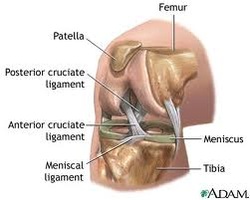Injury Prevention Guide for Exercising
“How and why did this happen to me” was the question that played over and over in my head like a CD on repeat. After all, I considered myself to be a careful fitness enthusiast. And I’d been working out for several years without experiencing anything close to an exercise related injury. With that said, I was still left to evaluate my own role in this unexpected incident. It became increasingly clear to me that I might have unknowingly played a part in my injury due to factors such as: a lackadaisical approach towards pre-workout stretching, not wearing terrain-appropriate shoes, as well as not fully being aware of or educating myself on injury preventative practices.
DIFFERENT TYPES OF INJURIES AND CAUSES
FOOT AND ANKLE
Cause: Primarily sports in which you jump, run and/or change directions suddenly, such as running, basketball, volleyball, soccer, football and tennis.
KNEE
Cause: Typically, we rarely use our hip muscles during the day. Then we decide to participate in physically activities such as kickboxing or an intense boot camp without being prepared to handle the intensity of the workout. According to research, if our feet are unstable, due a variety of factors, such as weak hip muscles or improper footwear, the knee gets all the stress.
It’s also essential that runners and walkers access the terrain in which they will be exercising in order to prepare themselves appropriately. It’s been reported that women who suddenly take up exercise are more susceptible to knee injuries because they often have weak hip muscles and lower bone density, which causes an imbalance in the knees.
Cause: If you’re experiencing pain in your shoulder it may be an indication of an injury or an underlying medical condition. A rotator cuff tear or shoulder separation will cause pain and limit shoulder range of motion. Carpal tunnel can also contribute to a workout injury. According to medical professionals a person’s arms have to internally rotate when you type, which can put pressure on the shoulders. And as a result, you may go to the gym and do pushups or shoulder press with your arms rotated in and find yourself at risk of injuries such as Supraspinatus tendonitis, one of the many injuries that results from an overuse injury of the rotator cuff.
Cause: Muscular strains, arthritis, soft-tissue injuries, and disc disease; or sports such as golfing, tennis, running, and bowling.
Preventing Workout Injuries
There are simple steps that can help keep you injury-free during your workout.
1. Warm-up and cool-down. Every workout should begin with a warm-up and end with a cool-down period. A warm-up helps your body get ready for exercise. It gradually increases your heart rate and loosens your muscles and joints.
Some ways to warm up:
- walk on treadmill
- jog in place for 5-10 minutes
- take a short visit to sauna or steam room
- jump rope
A cool-down after you work out is important to slowly bring your heart rate back to normal. Walking for five to 10 minutes after you work out is one way to cool down.
2. Don’t forget to stretch! Stretch before and after you workout.
This will:
- increase flexibility
- reduce risk of muscle soreness and injury
It’s especially beneficial to stretch after you warm up and cool down.
3. Ease into it. When you begin an exercise routine or start a new workout program, start slowly. Then gradually build on the intensity, duration, and frequency.
Don’t push yourself too hard. As your fitness abilities increase, you will have the opportunity to challenge yourself more and/or will be naturally inclined to increase your speed or duration.
4. Cross-train. Vary your workout. Don’t overuse one set of muscles. When you repeat the same muscle movements frequently, it can lead to overuse.
Some ways to vary your workout:
- run on day one
- alternate weights based on selected extremities….ex. upper body such as arms and back on one day, lower body such as legs and glutes on another.
- swim or cycle on day three
5. Know your trouble spots. Tailor your workout for problem areas. For example, if you weaker upper body abilities, you’ll want to build up strength. But don’t do exercises that actually hurt. And be sure to start out lightly.
6. Listen to your body. Don’t push yourself to the point of pain. The “no pain, no gain” expression can set you up for an injury. It’s ok to feel a little soreness, but it’s not alright to experience debilitating pain. You can get fit without feeling pain. If you feel pain, you may be injured. Stop your workout and rest for a day.
7. Fuel your body.
- Drink plenty of water before, during, and after you work out.
- Eat nutritious food and make sure to nosh on a healthy meal or snack every two to three hours to keep a steady source of fuel for your body. After your workout, eat a healthy carb and protein snack to replenish your energy reserves.
8. Meet with a trainer. Before starting a weight-lifting or exercise routine, meet with a trainer. He or she can show you how to work out correctly. The trainer will assist you in tailoring a realistic and appropriate exercise program.
9. Dress right. Wear the proper gear for your workout. If you are a runner, wear a good pair of running shoes that fit properly. If you are a biker, always wear a helmet.
10. Rest: Take one to two days off a week to rest. Rest days give your body a chance to recover between workouts. That can help prevent injuries.
|
If you get hurt, it’s important that you take care of your injury immediately. How you take care of an injury can impact the progress of healing and recovery. If you develop a workout injury, it’s best to follow the RICE method to keep your injury from getting worse:
Last but certainly not least, always confer with a physician. It’s essential that when deciding and embarking on a an exercise regimen that you confer a medical professional to ensure that preparing to participate in activities that health wise you are capable of accomplishing. Have you experienced a fitness or sports related injury? If so, how as your recovery? Please share in the comments below. |


























